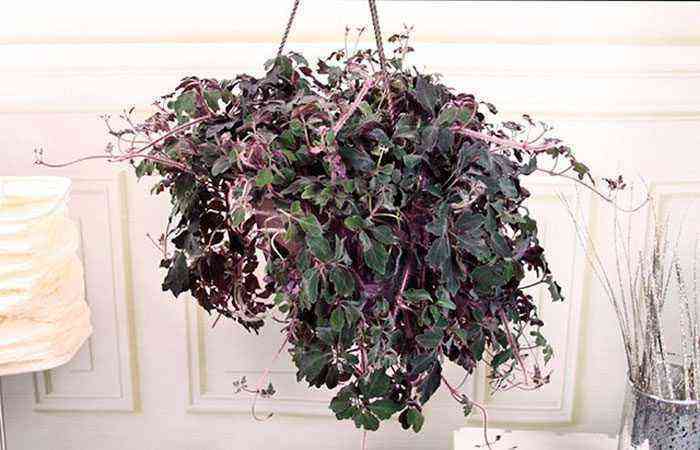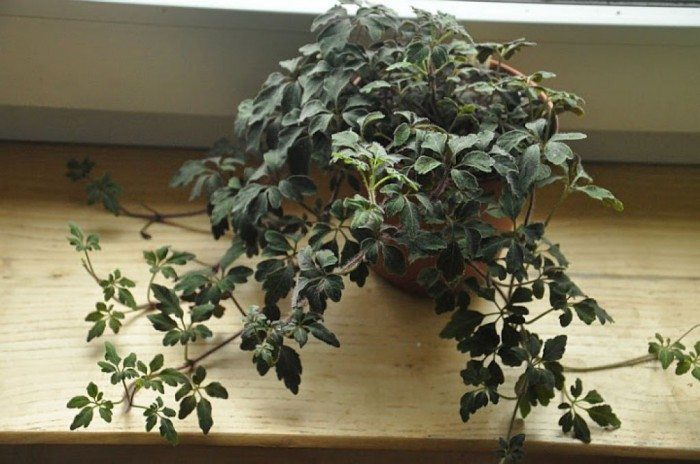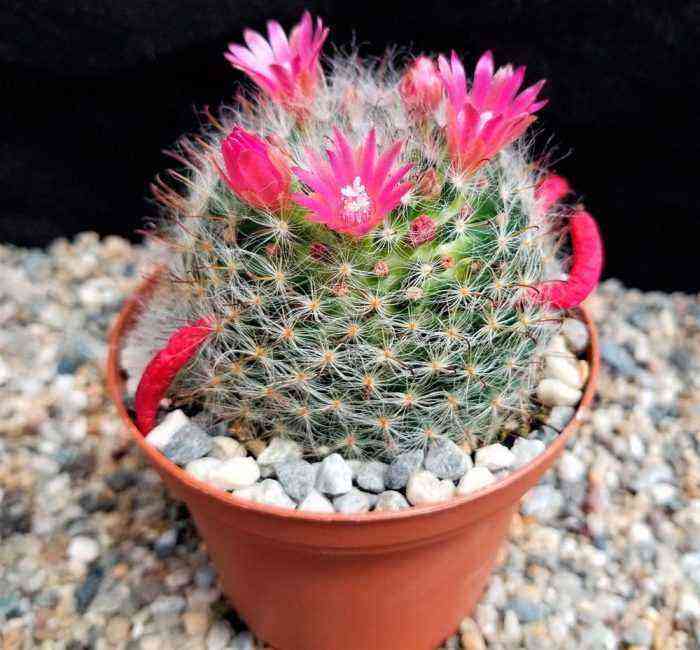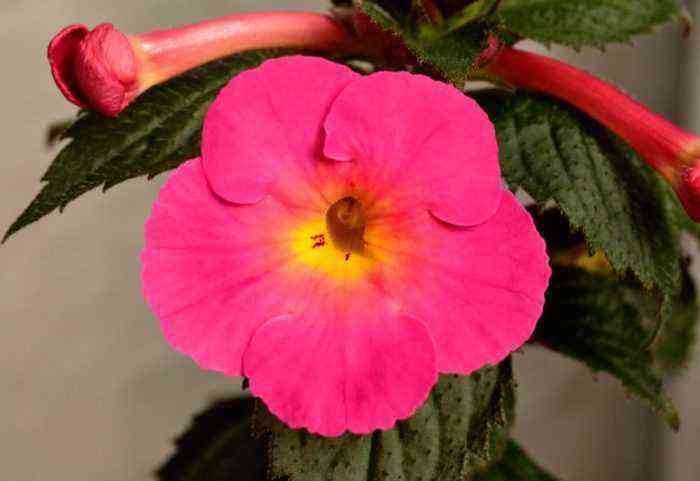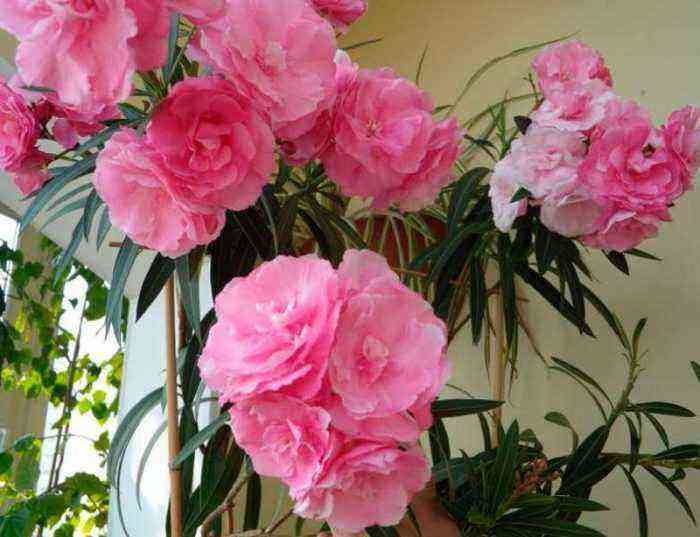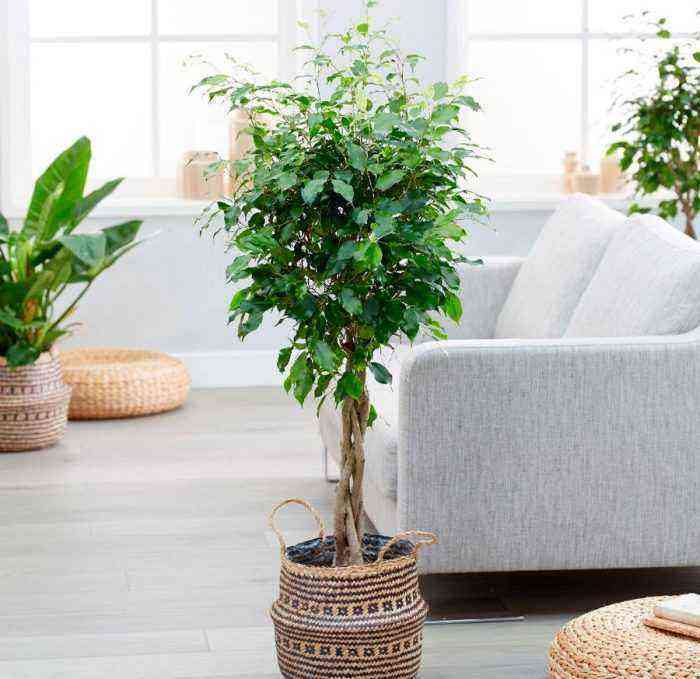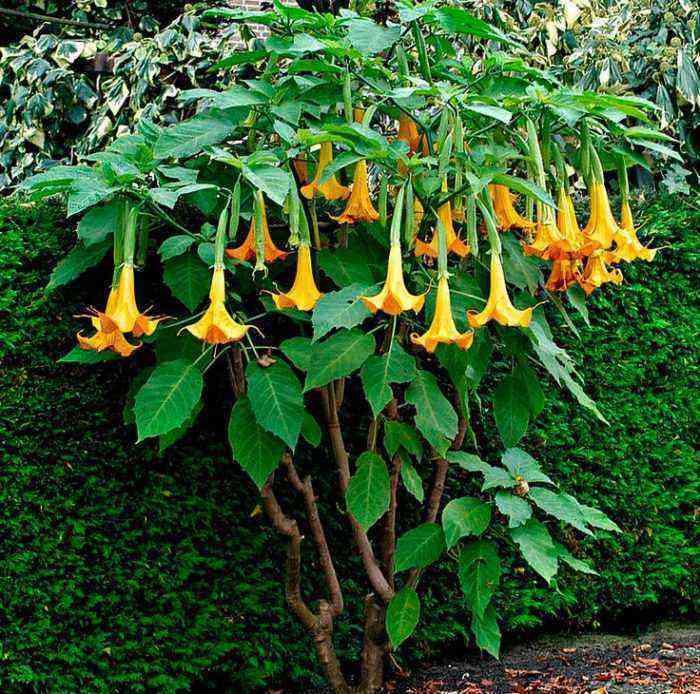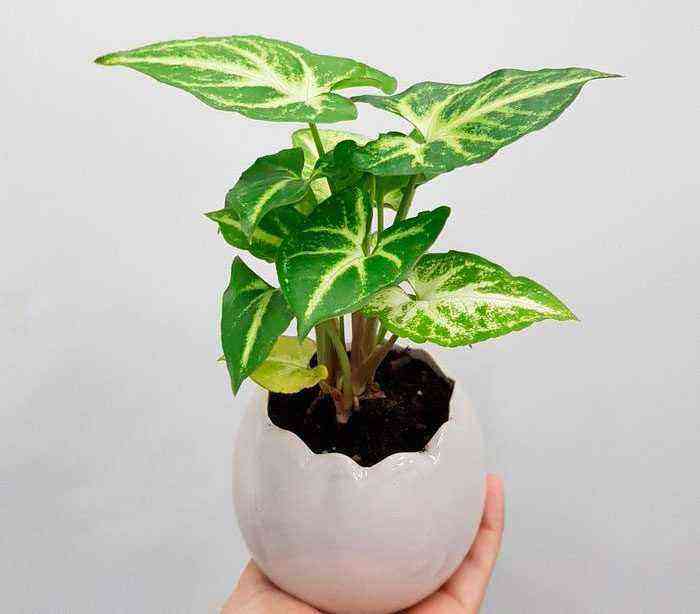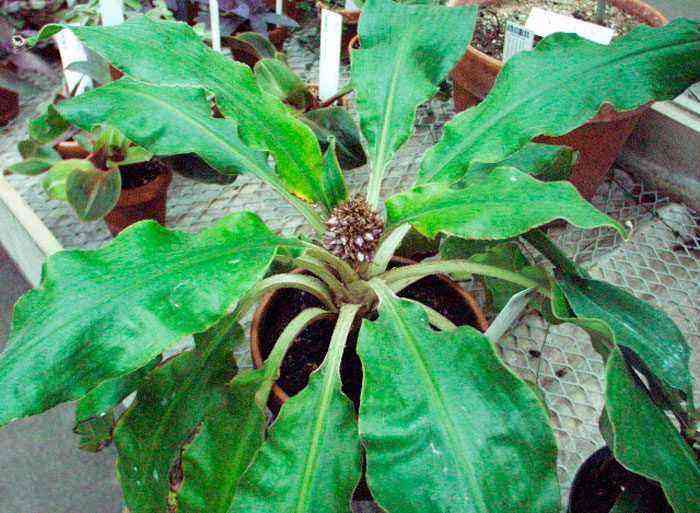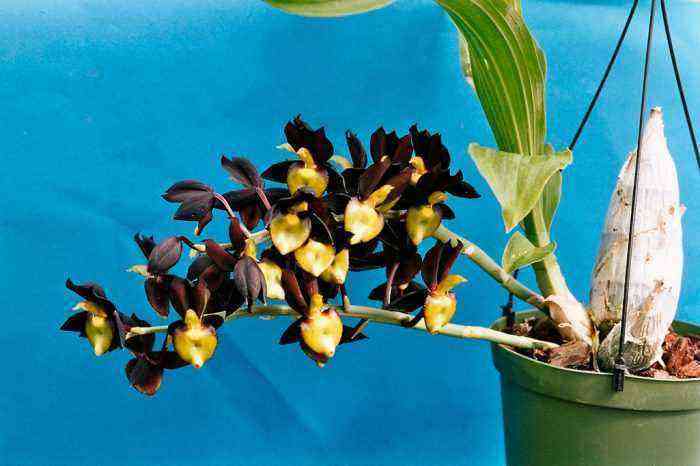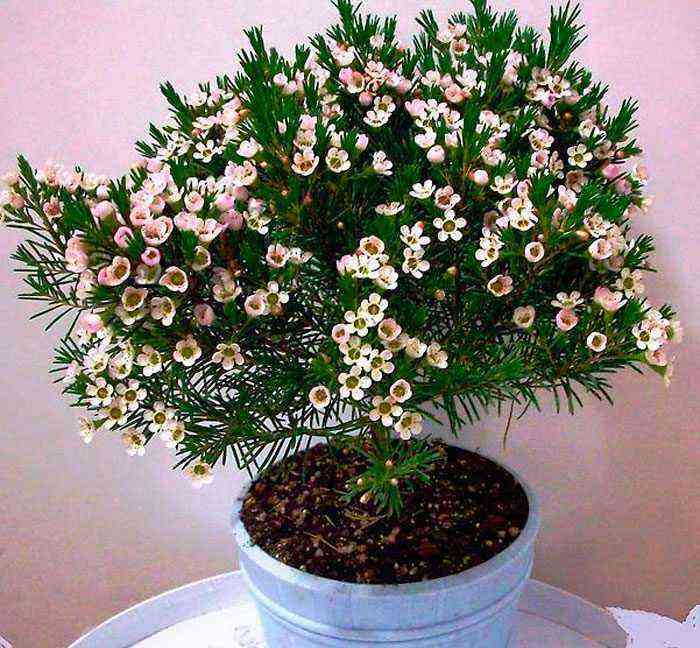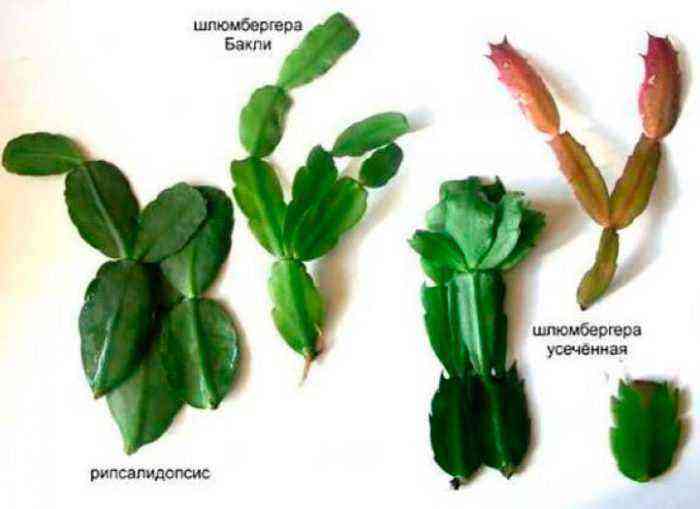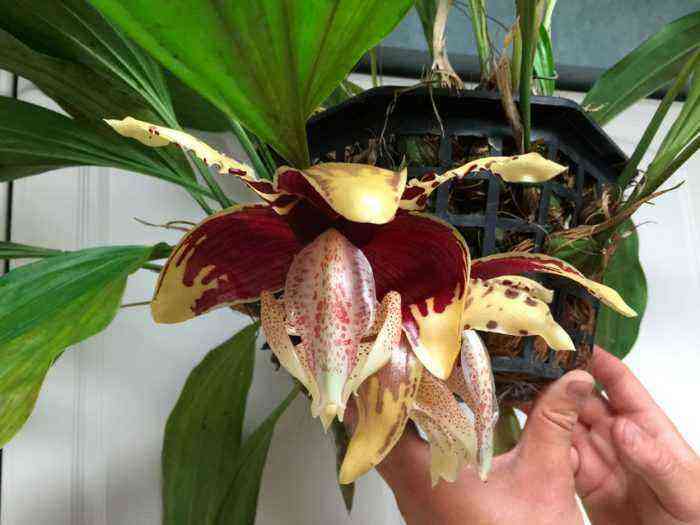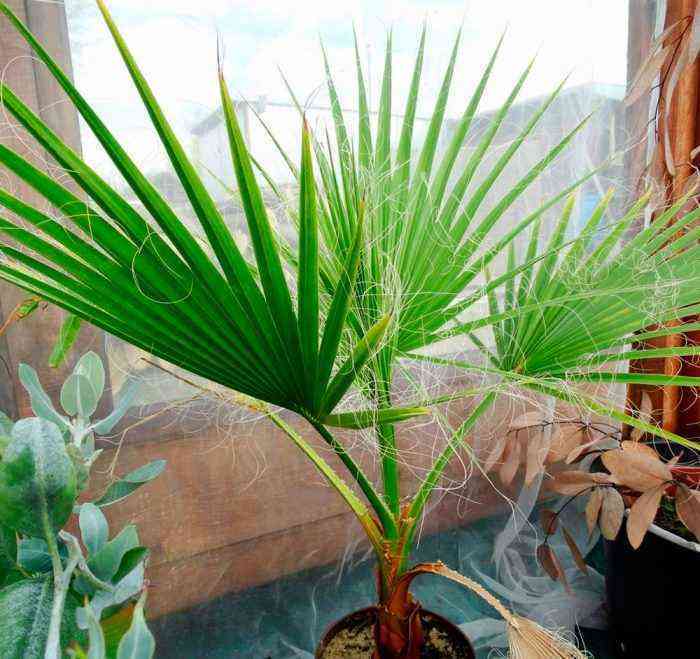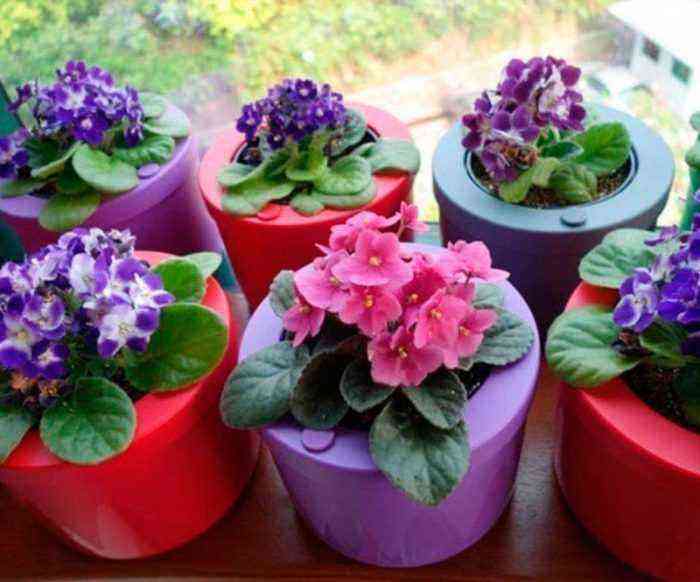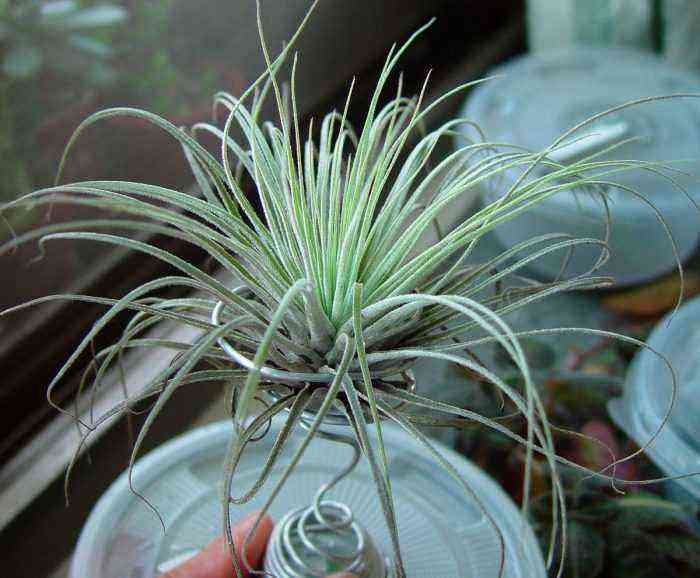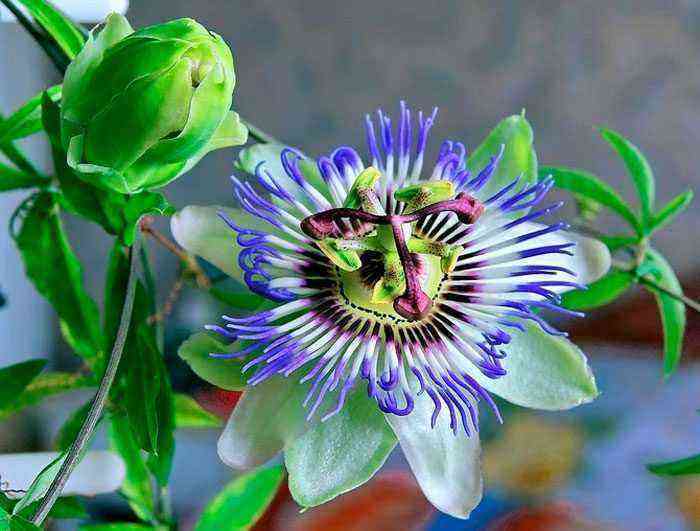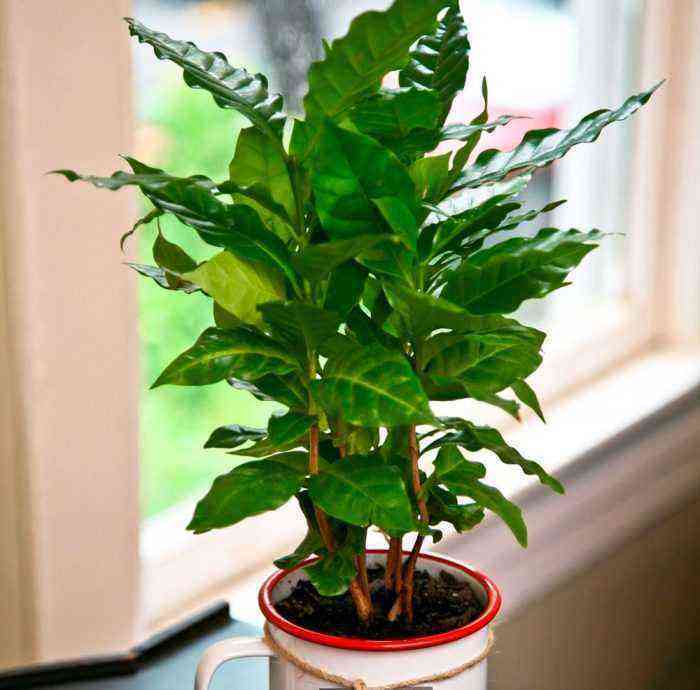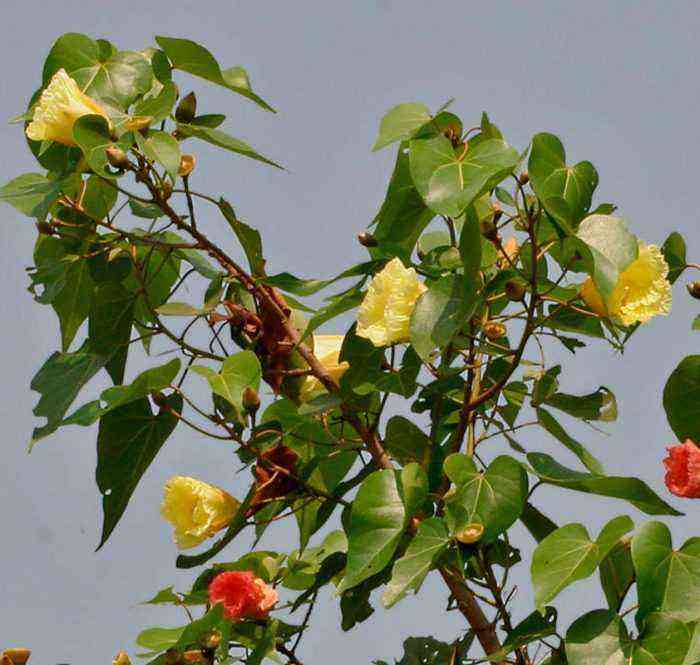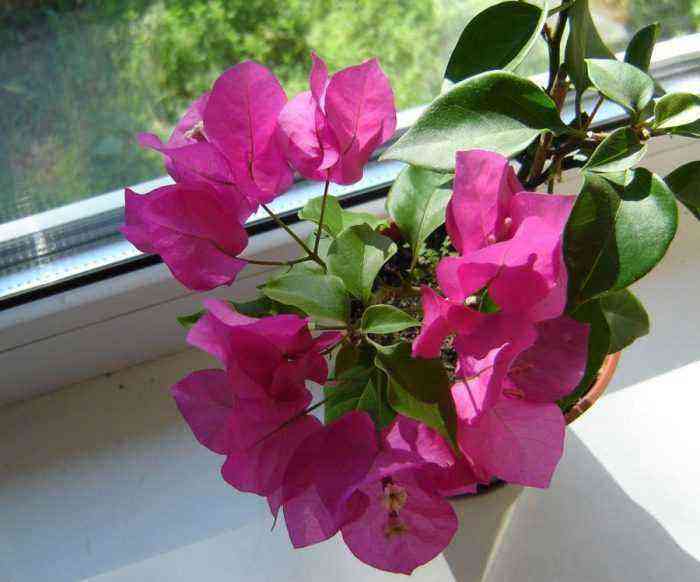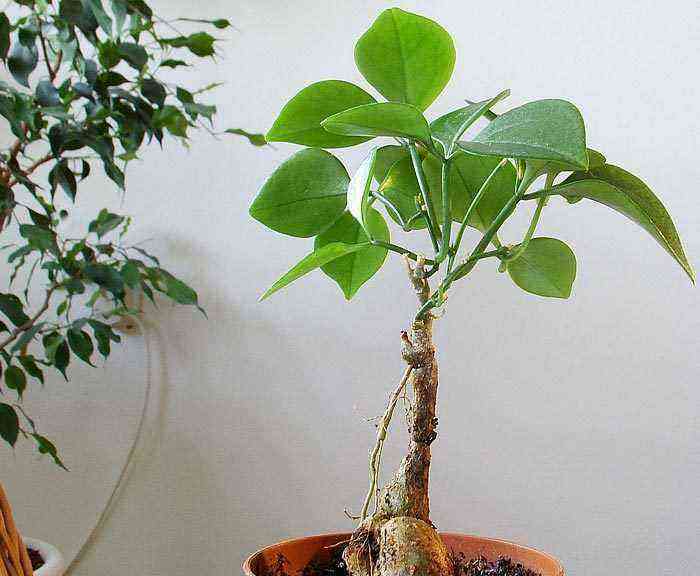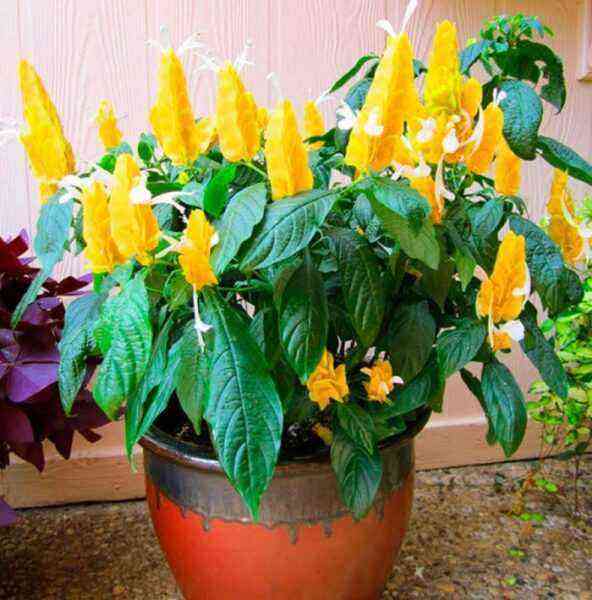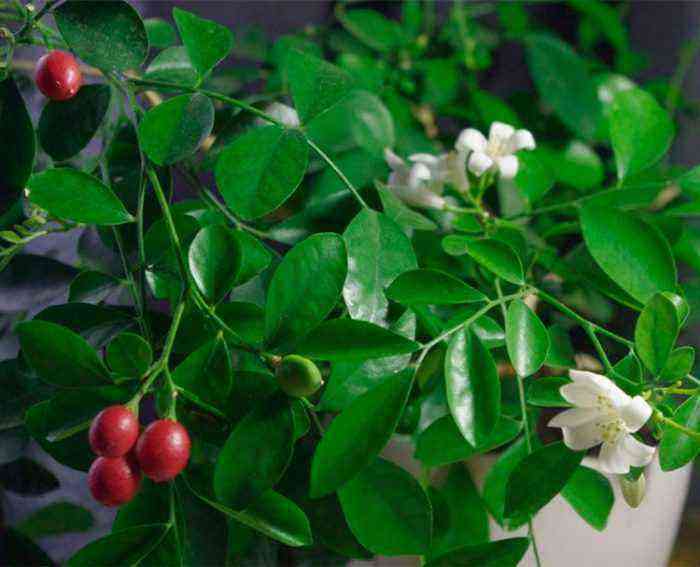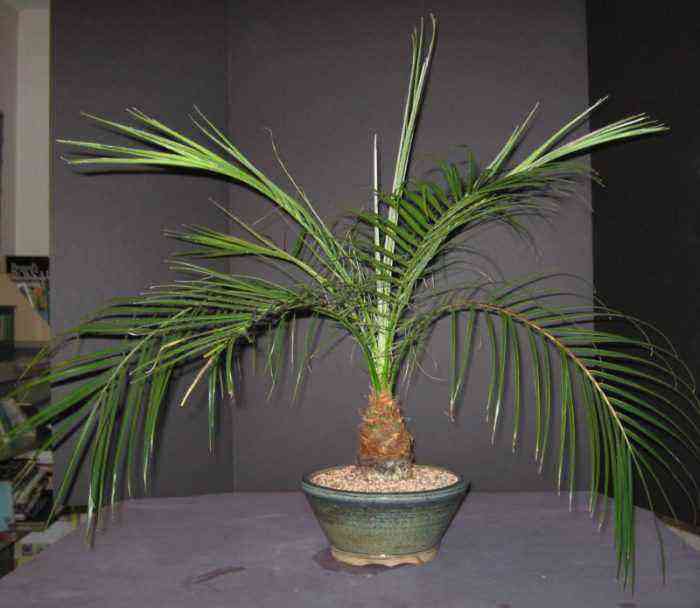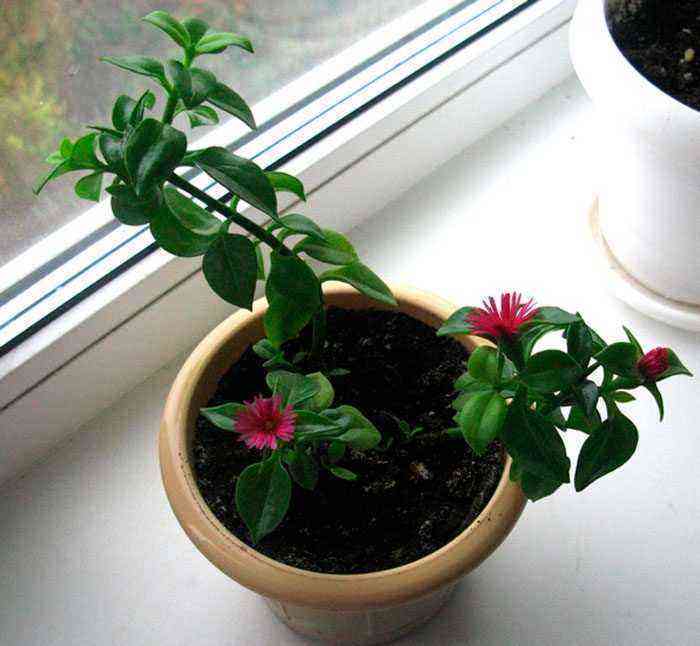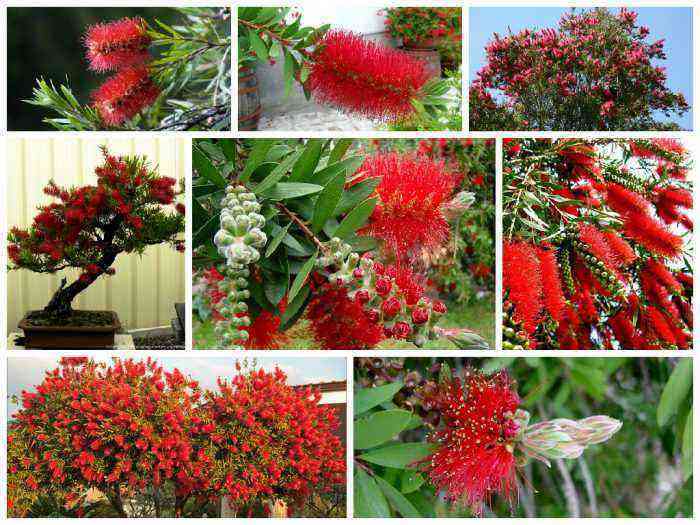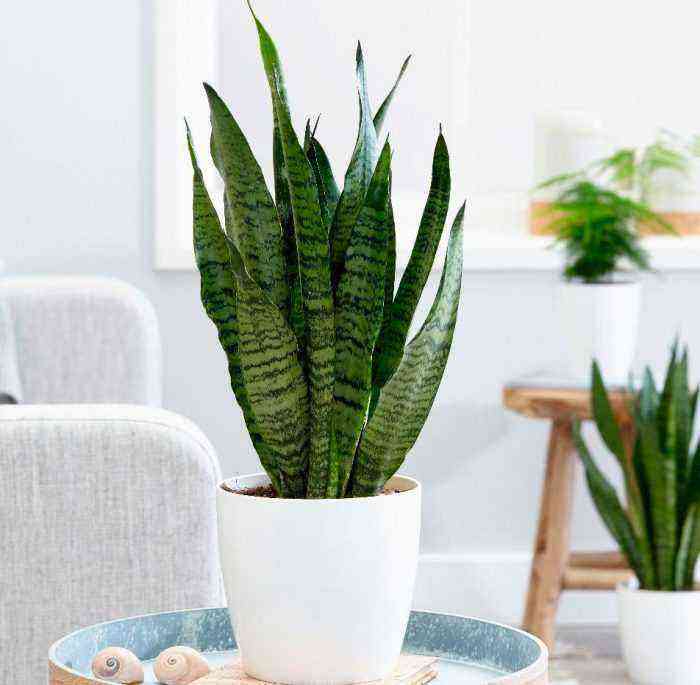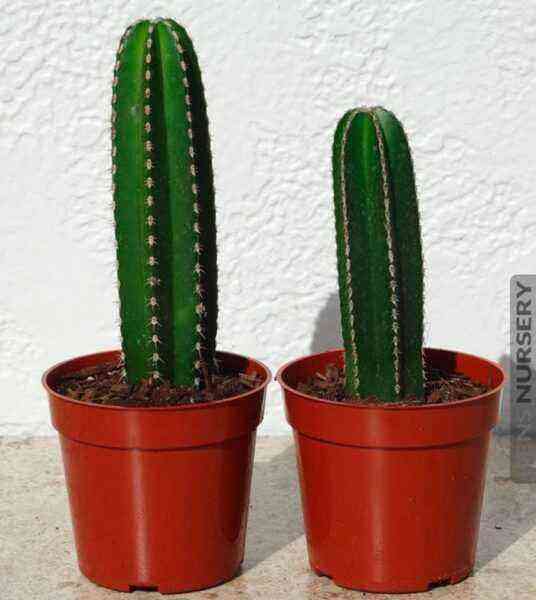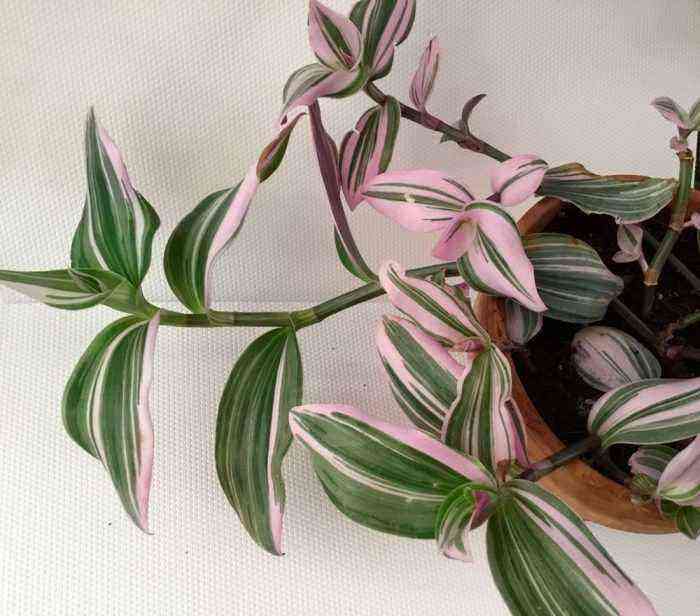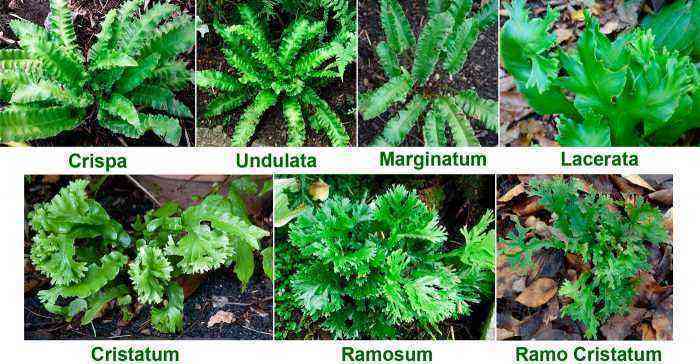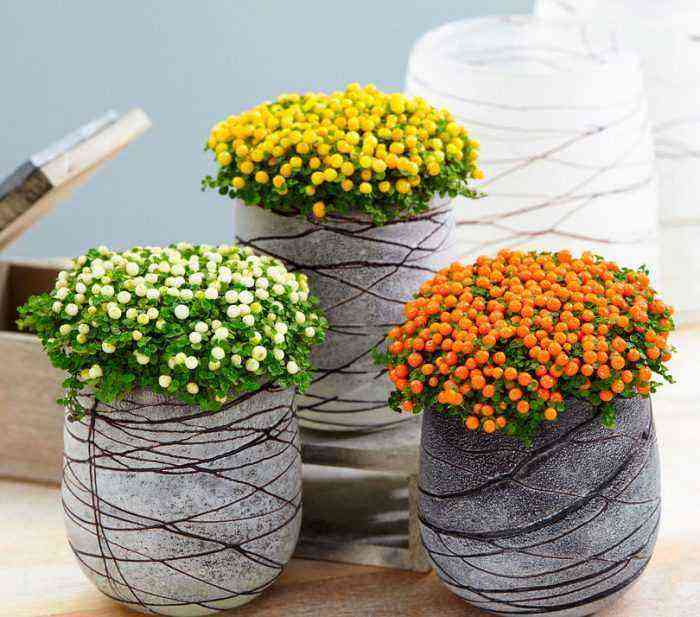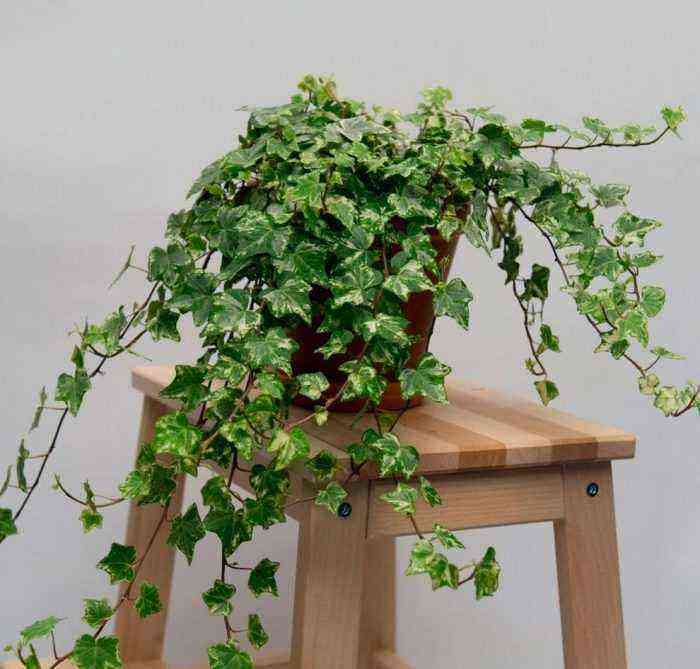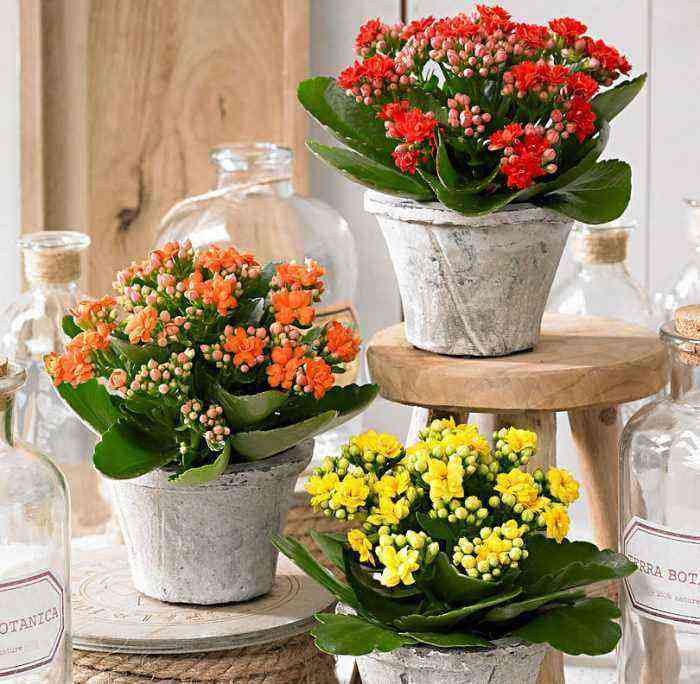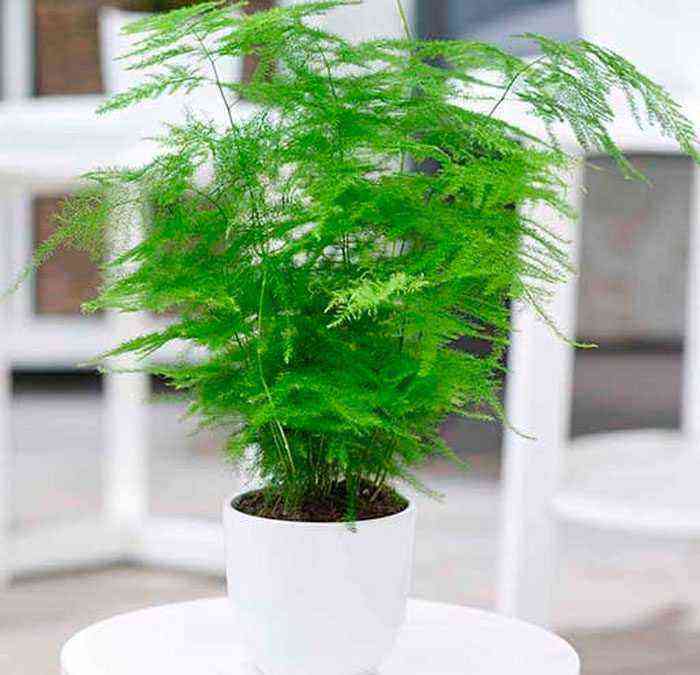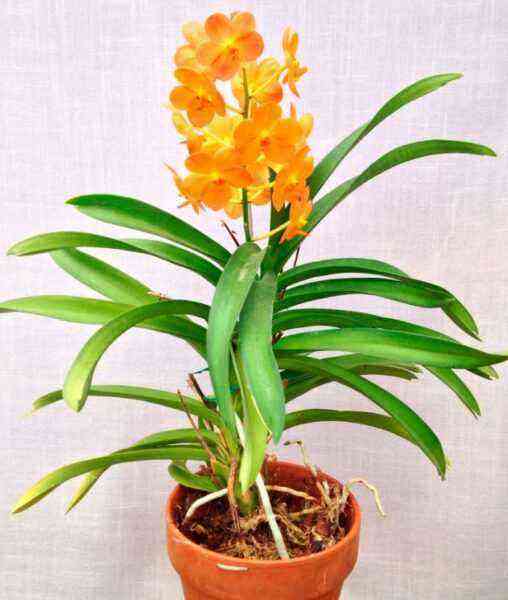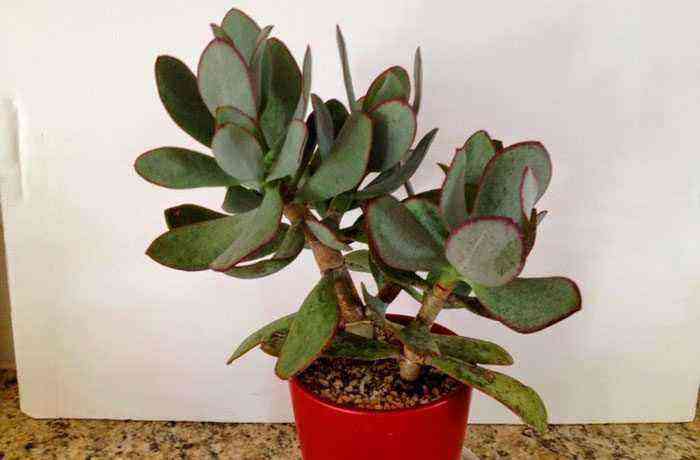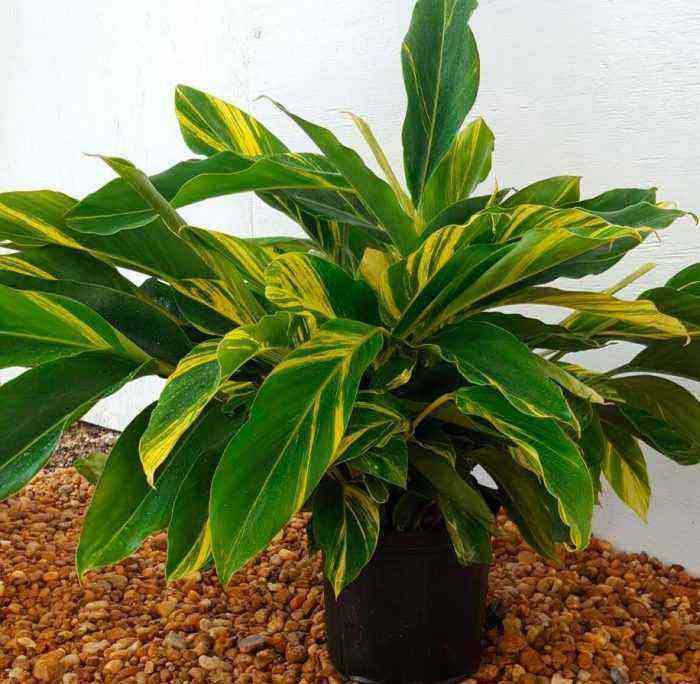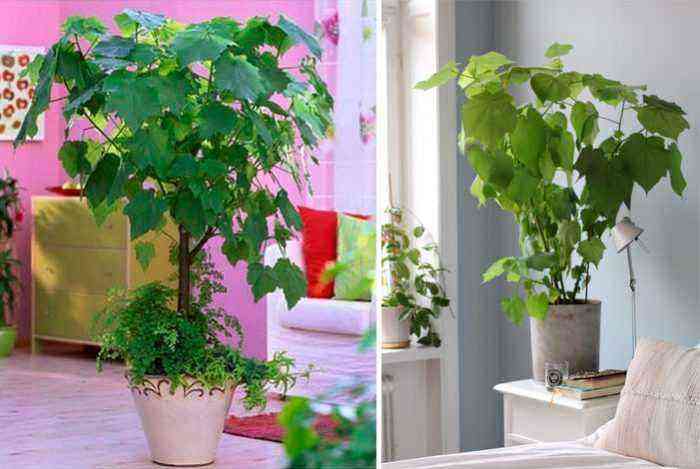Herbaceous perennial plant mikaniya (Mikania) is directly related to the Compositae family. It comes from Central and South America.
At home, flower growers grow only one type of such a plant – mikaniya trifoliate (Mikania ternata). This herb is a perennial. In young specimens, the shoots are erect, but with age they become lodging. It is grown as an ampelous plant, special baskets are used for this, and you can also twist the stems around the support. Finger-complex leaf plates consist of five diamond-shaped segments. The leaf at the top is the largest, so its length is about 5 centimeters. And 2 leaves in the middle are 2,5–3 centimeters long, and 2 lower ones are 1,5–2 centimeters long. The surface of the leaf plates is velvety and there are grooves along the edges, thin petioles are brownish. The front surface of the foliage is dark green in color with red veins running along the veins, and the back is purple.
Caring for mikania at home
Illumination
Needs bright lighting, but at the same time it should be diffused. Also, the plant needs direct rays of the evening or morning sun. In winter, the lighting should remain the same bright.
Temperature conditions
The most suitable temperature for growing is moderate. So, in summer it should be from 18 to 20 degrees, and in winter – about 14-15 degrees. At the same time, make sure that the room is not colder than 12 degrees. Needs systematic ventilation.
Humidity
Such a plant simply needs increased air humidity, but at the same time it is worth remembering that it is impossible to moisten the foliage from the sprayer. Drops that collect on the surface of the leaves after spraying, contribute to the appearance of specks, which significantly impairs the appearance of the flower. In order to increase the humidity of the air and at the same time maintain the attractiveness of the plant, you need to pour expanded clay into a wide pan or put sphagnum and pour in a small amount of water. In this case, you need to ensure that the bottom of the pot does not come into contact with the liquid.
How to water
In summer, abundant watering is necessary, while ensuring that the soil is constantly slightly moistened (not wet). However, there should be no stagnation of water in the soil. In winter, you need to water less. So, watering is carried out only after the soil in the pot dries well. But at the same time, make sure that there is no complete drying out of the earthen coma.
Additional fertilizing
Top dressing is carried out in spring and summer once every 1 weeks. To do this, use a balanced liquid fertilizer, so, it contains phosphorus, nitrogen and potassium in the same amount. For fertilization, you need to take a solution of a weaker concentration 2 or 2 times from that recommended on the package.
Transplant Features
The transplant is carried out in the spring. Young specimens are subjected to this procedure once a year, and adults – once every 1 or 1 years. To prepare the soil mixture, you need to combine leaf and sod land, as well as sand and peat in a ratio of 2: 3: 2: 1. Purchased universal soil for decorative deciduous plants is also suitable. Do not forget to make a good drainage layer at the bottom of the container.
Features of reproduction
It can be propagated by apical cuttings. In spring, the apical cuttings are cut. Then it is treated with a growth stimulating agent, and then planted in small pots for rooting. The container must be covered with glass or foil and placed in a warm (about 20 degrees) place. Every day, you should remove the shelter for a while for ventilation. The soil should be slightly moistened all the time.
Pests and diseases
Thrips and red spider mites can settle on the plant. And it can get sick with powdery mildew and white rot.
Mučnistaâ rosa – a whitish-gray powdery coating forms on the surface of the foliage. The spots gradually grow larger and turn brown. The leaves curl up and then die off. This disease most often appears in rooms with high humidity, with temperatures around 18–20 degrees and with stagnant air. In order to get rid of this disease, it is necessary to carry out the treatment with a fungicide, an antibiotic solution (penicillin + streptomycin 100 U / ml). After 5-7 days, you need to process the flower again.
Gray mold – such a disease prefers high humidity and coolness. A fluffy, ash-gray bloom forms on the surface of the infected parts of the flower. Brown spots appear on the surface of shoots and foliage, or the edge of the leaf plates begins to turn brown. To get rid of such rot requires systematic ventilation, bright lighting and loosening of the substrate. Treat with a solution of foundation or topsin-M.
Red spider mite – a thin web appears between the leaf plates, and whitish spots are formed on their surface. Such a pest prefers low air humidity. Treatment with a systemic insecticide (fufanon, fitoverm, actellik) is required.
TRIPS – this insect prefers dry and very warm air. On the seamy surface of the leaf plate, thrips lays numerous colonies, while pale dots are formed on the front side. Gradually, the front side of the leaf acquires a brownish-gray color with a silvery sheen. In this case, treatment with one of the following insecticidal agents is required: decis, inta-vir, fitoverm or actellic.
Possible difficulties
- Platinum leafs become smaller, and the shoots become elongated – poor lighting.
- The tips of the leaves become thinner and acquire a brownish tint – low humidity.
- The foliage turns pale and wilts – overflow, stagnation of liquid in the soil.
